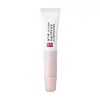What's inside
What's inside
 Key Ingredients
Key Ingredients

 Benefits
Benefits

 Concerns
Concerns

 Ingredients Side-by-side
Ingredients Side-by-side

Hydrogenated Polyisobutene
EmollientMicrocrystalline Wax
Emulsion StabilisingPentaerythrityl Tetraisostearate
EmollientButyrospermum Parkii Butter
Skin ConditioningDextrin Palmitate/Ethylhexanoate
EmulsifyingGlycerin
HumectantPolyethylene
AbrasiveDehydroacetic Acid
PreservativeDimethicone
EmollientDisteardimonium Hectorite
StabilisingButylene Glycol
HumectantSorbitan Isostearate
EmulsifyingCamellia Japonica Seed Oil
EmollientPanax Ginseng Root Water
MaskingAngelica Acutiloba Root Extract
Skin ConditioningOphiopogon Japonicus Root Extract
Skin ConditioningBupleurum Chinense Root Extract
AstringentOzokerite
Emulsion StabilisingHc Red No. 8
CI 77491
Cosmetic ColorantCaprylic/Capric Triglyceride
MaskingTocopherol
AntioxidantTocopheryl Acetate
AntioxidantTriethylhexanoin
MaskingTitanium Dioxide
Cosmetic ColorantPolyglyceryl-2 Diisostearate
EmulsifyingPolyglyceryl-2 Dipolyhydroxystearate
Skin ConditioningPolyglyceryl-2 Triisostearate
EmulsifyingPolyhydroxystearic Acid
EmulsifyingPropylene Carbonate
SolventHydrolyzed Collagen
EmollientParfum
MaskingHydrogenated Polyisobutene, Microcrystalline Wax, Pentaerythrityl Tetraisostearate, Butyrospermum Parkii Butter, Dextrin Palmitate/Ethylhexanoate, Glycerin, Polyethylene, Dehydroacetic Acid, Dimethicone, Disteardimonium Hectorite, Butylene Glycol, Sorbitan Isostearate, Camellia Japonica Seed Oil, Panax Ginseng Root Water, Angelica Acutiloba Root Extract, Ophiopogon Japonicus Root Extract, Bupleurum Chinense Root Extract, Ozokerite, Hc Red No. 8, CI 77491, Caprylic/Capric Triglyceride, Tocopherol, Tocopheryl Acetate, Triethylhexanoin, Titanium Dioxide, Polyglyceryl-2 Diisostearate, Polyglyceryl-2 Dipolyhydroxystearate, Polyglyceryl-2 Triisostearate, Polyhydroxystearic Acid, Propylene Carbonate, Hydrolyzed Collagen, Parfum
Polyglyceryl-2 Isostearate/Dimer Dilinoleate Copolymer
EmollientHelianthus Annuus Seed Oil
EmollientDiisostearyl Malate
EmollientSimmondsia Chinensis Seed Oil
EmollientTocopheryl Acetate
AntioxidantSilica Dimethyl Silylate
EmollientOlea Europaea Fruit Oil
MaskingRubus Idaeus Seed Oil
EmollientRubus Idaeus Fruit Extract
AstringentPyrus Malus Fruit Extract
Skin ConditioningPyrus Malus Seed Oil
EmollientCitrus Paradisi Peel Oil
MaskingCamellia Sinensis Seed Oil
HumectantCamellia Japonica Seed Oil
EmollientArgania Spinosa Kernel Oil
EmollientMacadamia Integrifolia Seed Oil
Skin ConditioningCaprylic/Capric Triglyceride
MaskingIsostearic Acid
CleansingEthylhexyl Palmitate
EmollientDehydroacetic Acid
PreservativeMonascus Extract
Skin ConditioningTribehenin
EmollientRosa Canina Fruit Oil
EmollientSorbitan Isostearate
EmulsifyingWater
Skin ConditioningButylene Glycol
HumectantLactic Acid
BufferingPalmitoyl Tripeptide-1
Skin ConditioningCI 45380
Cosmetic ColorantCI 15850
Cosmetic ColorantCI 77491
Cosmetic ColorantLimonene
PerfumingPolyglyceryl-2 Isostearate/Dimer Dilinoleate Copolymer, Helianthus Annuus Seed Oil, Diisostearyl Malate, Simmondsia Chinensis Seed Oil, Tocopheryl Acetate, Silica Dimethyl Silylate, Olea Europaea Fruit Oil, Rubus Idaeus Seed Oil, Rubus Idaeus Fruit Extract, Pyrus Malus Fruit Extract, Pyrus Malus Seed Oil, Citrus Paradisi Peel Oil, Camellia Sinensis Seed Oil, Camellia Japonica Seed Oil, Argania Spinosa Kernel Oil, Macadamia Integrifolia Seed Oil, Caprylic/Capric Triglyceride, Isostearic Acid, Ethylhexyl Palmitate, Dehydroacetic Acid, Monascus Extract, Tribehenin, Rosa Canina Fruit Oil, Sorbitan Isostearate, Water, Butylene Glycol, Lactic Acid, Palmitoyl Tripeptide-1, CI 45380, CI 15850, CI 77491, Limonene
 Reviews
Reviews

Ingredients Explained
These ingredients are found in both products.
Ingredients higher up in an ingredient list are typically present in a larger amount.
Butylene Glycol (or BG) is used within cosmetic products for a few different reasons:
Overall, Butylene Glycol is a safe and well-rounded ingredient that works well with other ingredients.
Though this ingredient works well with most skin types, some people with sensitive skin may experience a reaction such as allergic rashes, closed comedones, or itchiness.
Learn more about Butylene GlycolCamellia Japonica Seed Oil comes from the Japanese Camellia plant. This plant is native to East Asia and known as "Tsubaki" in Japanese.
Camellia Japonica Seed Oil is rich in oleic acid. This makes it a great emollient. Emollients help soften and soothe the skin by forming a barrier. This barrier traps moisture within, keeping your skin hydated.
This ingredient is an emollient, solvent, and texture enhancer. It is considered a skin-softener by helping the skin prevent moisture loss.
It helps thicken a product's formula and makes it easier to spread by dissolving clumping compounds.
Caprylic Triglyceride is made by combining glycerin with coconut oil, forming a clear liquid.
While there is an assumption Caprylic Triglyceride can clog pores due to it being derived from coconut oil, there is no research supporting this.
Learn more about Caprylic/Capric TriglycerideCi 77491 is also hydrated iron III oxide. It's sole purpose is to give a red/pink hue to products.
Iron III oxides are classified as inorganic chemicals for coloring.
Synthetically created Ci 77491 is considered safer than those naturally found. This is because the synthetically created version may contain less impurities. Iron oxides are generally non-toxic and non-allergenic.
Learn more about CI 77491Dehydroacetic Acid is fungicide and bactericide. It is used as a preservative in cosmetics. Preservatives help elongate the shelf life of a product.
Dehydroacetic Acid is not soluble in water.
Sorbitan Isostearate is an emulsifer and cleaning agent. It is created from isostearic acid and sorbitol.
As an emulsifier, Sorbitan Isostearate prevents oils and water from separating.
Due to its isostearic acid base, it may not be safe for Malassezia or fungal acne.
Learn more about Sorbitan IsostearateTocopheryl Acetate is AKA Vitamin E. It is an antioxidant and protects your skin from free radicals. Free radicals damage the skin by breaking down collagen.
One study found using Tocopheryl Acetate with Vitamin C decreased the number of sunburned cells.
Tocopheryl Acetate is commonly found in both skincare and dietary supplements.
Learn more about Tocopheryl Acetate